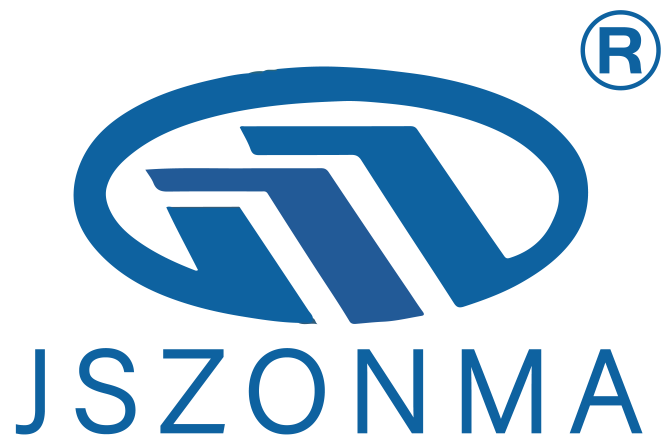Understanding the Role of Distribution Transformers in Power Systems
Core Functions in Energy Distribution
Distribution transformers play a pivotal role in energy distribution systems by reducing high-voltage electricity from transmission lines to lower voltages suitable for residential and commercial use. These transformers are essential components of the electrical grid as they ensure that electricity can be safely and efficiently distributed to homes and businesses. A key function they perform is facilitating the efficient flow of electricity within local grids, thereby maintaining a stable power supply and minimizing energy loss. Typically, these transformers operate with high efficiency rates, often exceeding 98%, which is crucial for effective energy management and reducing operational expenses.
Moreover, distribution transformers adapt to diverse configurations based on various applications, like intermittent or continuous load types. This adaptability is crucial for catering to different voltage requirements across residential and industrial sectors. The transformer’s efficiency is enhanced by choosing the appropriate voltage ratio and phase configuration, which further aids in optimizing power distribution and conserving energy.
Impact on Grid Efficiency and Reliability
Distribution transformers significantly improve the efficiency of power grids by minimizing energy losses, thereby reducing operational costs for utility companies. The reduction in energy loss directly translates into lower electricity bills for end-users, making the system both economically and environmentally beneficial. Additionally, the performance of these transformers directly contributes to grid reliability, playing a vital role in minimizing the risk of outages. This reliability is vital for maintaining uninterrupted power supply to critical infrastructures and households.
Incorporating advanced monitoring technologies into distribution transformers enhances their operational reliability by enabling utilities to track performance metrics in real-time. This real-time data facilitates proactive maintenance measures, allowing for quick responses to potential issues before they escalate into larger problems. Consequently, these technologies not only bolster the longevity of transformers but also ensure consistent performance, reinforcing the stability and robustness of power supply systems. Such technologically equipped transformers are integral to the future of sustainable and reliable energy distribution networks.
Key Factors for Choosing a Distribution Transformer
Assessing Load Capacity and Demand
Understanding the expected load demand is crucial when selecting a distribution transformer that can effectively handle both peak and continuous load requirements. By accurately assessing the load demand, you ensure the transformer can sustain optimal performance without struggling or overheating during usage peaks. It's not only about meeting current demands; it's also essential to factor in future growth to prevent the risks associated with under-sizing the transformer. To accommodate unexpected demand surges, industry standards recommend incorporating a safety margin of approximately 25%. This allows for a buffer that helps maintain system stability and reliability.
Voltage Compatibility and Phase Configuration
Ensuring voltage and phase compatibility is essential for the efficient operation of distribution transformers. The transformer must match the service voltage level and align with the electrical system's phase configuration—be it single-phase or three-phase. Incorrect voltage ratings can lead to inefficient operation or even equipment failure, highlighting the importance of precise voltage assessment. Consulting local regulations and utility specifications is necessary to confirm compliance and compatibility, ensuring safe and optimal performance within your electrical system.
Efficiency Ratings and Energy Loss Reduction
High efficiency ratings are vital for reducing energy losses and enhancing transformer performance over time. Seek transformers that meet or exceed DOE 2016 efficiency standards, as they are designed to minimize energy wastage. Efficient transformers not only save on electricity costs but also significantly reduce the carbon footprint of electrical systems, contributing to environmental sustainability. Investing in high-efficiency transformers provides substantial returns over their lifespan, particularly in scenarios involving high usage and demand.
Cooling Methods: Oil vs. Dry-Type Systems
The choice between oil-filled and dry-type systems in transformers is influenced by environmental conditions, safety requirements, and maintenance considerations. Oil-filled transformers are favored for their superior cooling efficiencies, although they carry potential environmental risks in cases of leaks. Conversely, dry-type transformers are suitable for indoor locations and hazardous environments, offering advantages in terms of safety and space efficiency. Evaluating these factors is crucial to select the transformer system that best meets your operational needs and environmental safety standards.
Types of Distribution Transformers
Oil-Filled Transformers: Pros and Cons
Oil-filled transformers stand out for their exceptional thermal conductivity and substantial capacity, making them an ideal choice for high-demand applications. These transformers use mineral oil for cooling and insulation, which helps in efficiently managing heat generated during the operation. However, the risk of oil leakage poses significant environmental threats, requiring careful attention during installation and maintenance. Additionally, regulatory compliance is crucial as these transformers are subject to stringent environmental safety regulations. Therefore, while offering significant advantages in performance and reliability, oil-filled transformers demand a heightened focus on safety and regulation compliance, particularly when they are installed in environmentally sensitive areas.
Dry-Type Transformers for Hazardous Environments
Dry-type transformers are preferred in hazardous environments due to their non-flammable insulation, making them a safer option compared to oil-filled transformers. These units are devoid of liquids, thus eliminating the risks associated with oil synergies, which, in turn, reduces maintenance complexities. Furthermore, their compact design provides a practical solution for installations in confined spaces, which is highly advantageous in urban settings where space is a premium. Therefore, dry-type transformers combine safety and efficiency, supporting urban electricity networks with minimal risk and maximum operational lifespan.
Pole-Mounted and Compact Solutions
Pole-mounted transformers offer an efficient energy distribution solution in rural areas where space constraints often exist. These transformers are installed on utility poles, providing an unobtrusive method for delivering electricity to sparsely populated regions. Similarly, compact solutions have gained traction in urban environments, offering flexible configurations that adapt to diverse installation needs. Both pole-mounted and compact transformers contribute significantly to reducing installation costs while enhancing maintenance accessibility, which is essential for optimizing energy distribution both in rural and urban settings.
Innovations: Smart and Eco-Friendly Models
Smart transformers represent a significant leap forward in technology by incorporating advanced features like remote monitoring and control, which enhance the efficiency of electricity distribution systems. These transformers enable real-time data analysis and predictive maintenance, consequently improving grid reliability. Eco-friendly models go a step further by utilizing sustainable materials and designs aimed at reducing environmental impact throughout their lifecycle. By investing in smart and eco-friendly transformer technologies, companies not only advance their own sustainability initiatives but also align with the global push towards regulatory compliance and reduced carbon footprints.
Conclusion: Making an Informed Decision
Balancing Performance, Safety, and Budget
Making an informed decision in choosing the right distribution transformer involves evaluating several critical aspects, namely performance metrics, safety considerations, and budget constraints. Here’s a step-by-step guide to help you navigate these factors:
- Assess Performance Metrics: Ensure the transformer meets your operational requirements in terms of capacity, efficiency, and compatibility with your current electrical systems. This involves examining the transformer’s load capabilities, voltage adjustments, and possible integration within existing infrastructure.
- Evaluate Safety Considerations: Understand the safety protocols associated with various transformer types. Oil-filled transformers, for instance, demand diligent management due to the risk of oil spillage, while dry-type transformers offer non-flammable solutions suitable for hazardous environments.
- Budget Constraints: The recent rise in transformer costs, driven by increased material prices and supply chain challenges, emphasizes the need for a budget-conscious evaluation. Factor in initial investment costs and long-term operational expenses, such as maintenance and energy efficiency.
Consulting with experts in the field is a wise approach, as they can provide valuable insights and guidance tailored to your specific operational needs, helping you to balance these aspects effectively. By investing in the right distribution transformer, companies can lead to long-term savings and enhanced operational reliability. This strategic decision not only addresses immediate requirements but also sets the foundation for future expansions in line with evolving power demands.
FAQ
What is the main role of distribution transformers in power systems?
Distribution transformers are crucial for reducing high-voltage electricity from transmission lines to lower voltages that are suitable for residential and commercial use, ensuring efficient and safe energy distribution within electrical grids.
How do distribution transformers contribute to energy conservation?
They operate at high efficiency rates, often over 98%, minimizing energy losses and reducing operational costs, thus aiding in effective energy management and conservation.
What factors should be considered when choosing a distribution transformer?
Key factors include assessing the expected load demand, ensuring voltage compatibility and phase configuration, evaluating efficiency ratings to reduce energy losses, and selecting appropriate cooling methods based on environmental conditions and safety requirements.
What are the differences between oil-filled and dry-type transformers?
Oil-filled transformers are known for their high thermal conductivity and capacity but pose environmental risks due to potential oil leaks, while dry-type transformers are safer for hazardous environments and compact installations due to their non-flammable insulation and lack of liquids.
 EN
EN

